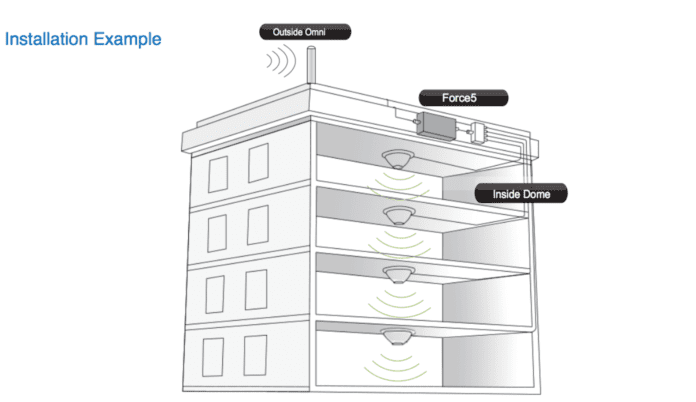The term “signal booster” is often associated with a consumer-facing product meant to amplify indoor cellular coverage often in a residential setting. However, as enterprises increasingly look to self-fund in-building wireless connectivity, more robust, business-facing products have been developed to address the lucrative market opportunity.
Frankie Smith, vice president of sales for SureCall, explained that the company’s enterprise-focused product lines serve as a passive DAS capable of supporting the in-building wireless connectivity needs of many enterprise spaces. Smith said that, for many enterprise-led investments, passive DAS is an attractive option given the approachable price point.
“For the enterprises,” Smith said, “we know there’s a need for better in-building coverage. There are several different types of solutions that can cover it, but with our approach we don’t trunk into the network. We take the signal that’s coming from the macro cell from an antenna we place on the roof. It captures that signal, then brings it down into an amplifier or series of amplifiers, and from there it goes out to a series to indoor antennas to broadcast that signal. It’s carrier agnostic. It’s simply rebroadcasting the cellular signals inside–what you get outside, you get inside.”
Another player in this space is Nextivity, which has a new product offering that can serve to rebroadcast an outdoor signal inside, an off-air deployment, or can also act as a sort of active DAS for a small cell-based signal source.
Werner Sievers, CEO of Nextivity, said during an interview at the recent DAS and Small Cells Congress event that many companies are “trying to bring the price point down to $1-per-square-foot. We’re operating at half that price point today,” with technology that the company describes as combining “the best of active DAS and smart booster technologies,” for in-building wireless coverage in venues up to 200,000-square-feet.
Cel-Fi Quatra supports either the off-air application, or deployment in conjunction with a small cell. Nextivity’s network unit can attach to a small cell, then feed the signal to up to four coverage units supplying RF and power over Ethernet cabling.
Sievers said, “We think that the small cell is going to become quite a consumerized device in time. At this point in time, we’re containing our architecture to make sure we’re functional with all small cells so we can directly couple to a small cell. We take that capacity and we can make it accessible by the rest of the space.”
In an off-air application, Sievers said the company has seen lots of international attention, particularly from South America, as it relates to Cel-Fi Quatra. “In this environment, there’s a lot of off-air connectivity. We’re able to really optimize signals to improve the indoor experience of a moderate outdoor signal. The fear with operators around the world is if you say anyone can hang things off-air, you get these heavily-laden systems that create noise and interference for the base stations that serve them.”
For a deep dive into in-building wireless connectivity, including a look at the role of DAS, small cells, signal boosters and hybrid systems, download this feature report.

